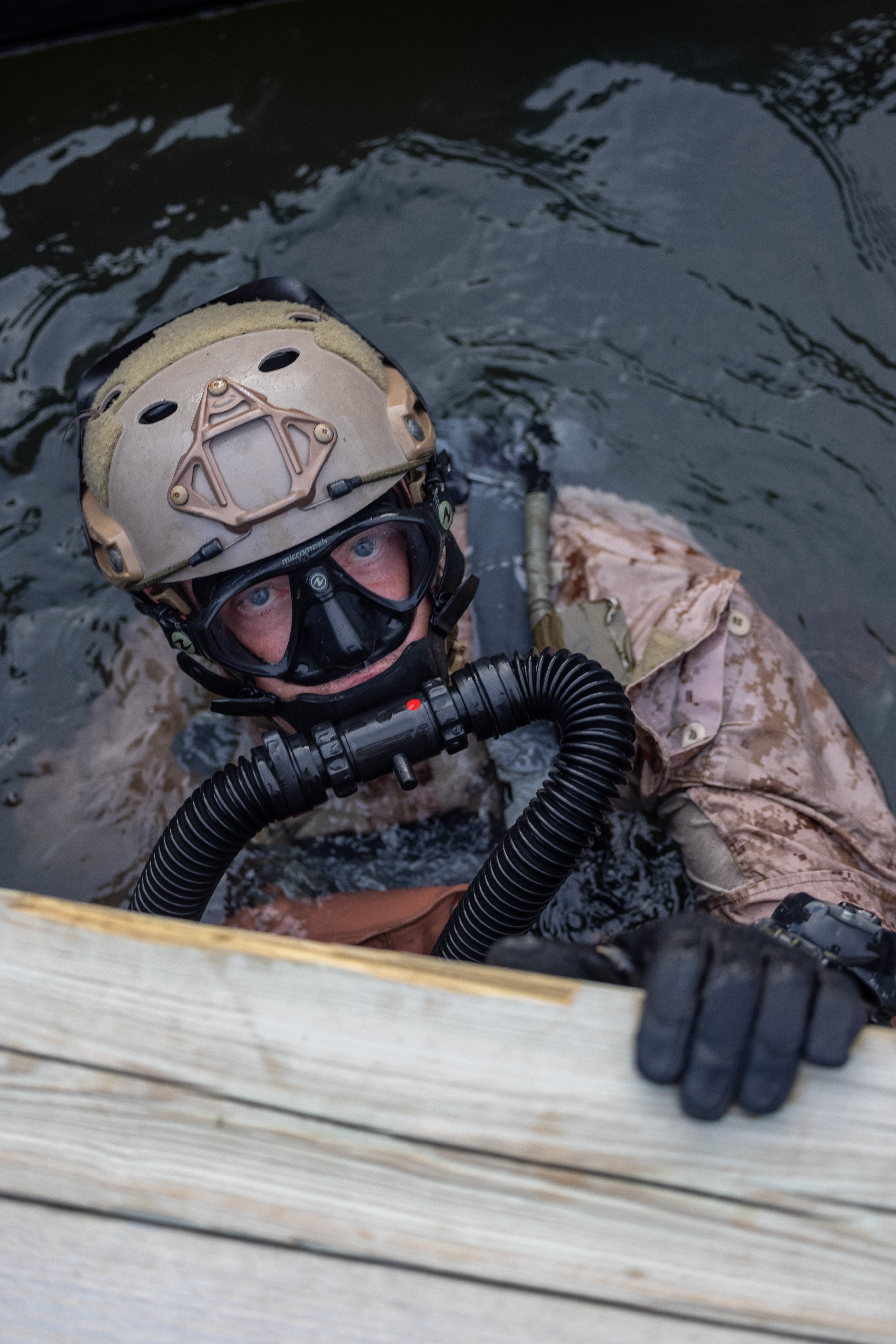
5 minute read
Grading Criteria Command’s Self-Assessment
Look Ahead by Chief Warrent Officer 5 Eric Nabors, Expeditionary and Special Warfare Division Head, Naval Safety Command
Determining whether a command’s self-assessment program is operating at a safe level, and whether it is above, at, or below fleet average is a critical component of the Naval Safety Command’s (NAVSAFECOM) mission to assist with overall risk mitigations throughout the fleet. The determining self-assessment process is still evolving, but NAVSAFECOM is working to ensure the criteria is as objective as possible.
The following data highlights the proposed method for determining a command’s self-assessment performance during a diving safety assessment (DSA) and to clearly define the criteria.
1.) Command self-assessment performance will be based on a 10-point scale. All commands will start assessments above average, with 10 points. All contrary criteria will be subtracted from the 10 points and no additional points will be added for compliance areas.
The grading scale is:
• 10-8 points after assessment: Above average
• 7-4 points after assessment: Average
• 3-0 points after assessment: Below average
2.) The commanding officer (CO) or executive officer (XO) in CO’s absence (or officer in charge or leading chief petty officer for smaller dive lockers), will be asked the readiness level of the major programmatic elements being assessed during the DSA in-brief. They will be asked to rate the elements as green (programmatically sound, no known discrepancies), yellow (programmatically sound with some discrepancies, but still operational) and red (not programmatically functional and or significant discrepancies).
These responses will be recorded by the senior DSA assessor for comparison to the DSA results.
The major programmatic elements are (as applicable):
(a) Administration
(b) Training
(c) Operational Risk Management (ORM)
(d) Hazardous Material (HAZMAT)
(e) Diving Medical
(f) Recompression Chamber
(g) Compressor
(h) Air Systems and Stowage
(i) Divator Dive Panel (DP2)
(j) Self-Contained Underwater Breathing Apparatus (SCUBA)
(k) Mk 16 Underwater Breathing Apparatus
(l) Mk 20 Mod 0/1 Underwater Breathing Apparatus
(m) Mk 25 Mod 2 Underwater Breathing Apparatus
(n) KM 37 Mod 0 Underwater Breathing Apparatus
(o) Diving Boat
(p) Diver’s Handling Equipment
(q) Underwater Cutting and Welding

3.) Once the DSA is completed, the senior assessor will compile all data and determine the command’s self-assessment performance with the following considerations:
(a) Deltas from the green/yellow/red self-assessment to the DSA findings. One color shift, (i.e., green to yellow, or yellow to red in either direction), will result in a subtraction of 0.5 weighted point from the 10-point scale. Two color shifts, (i.e., green to red or red to green), will result in a subtraction of 1.0 weighted point from the 10-point scale. This weighted grading will apply individually to all of the major programmatic elements. Points will be weighted so all applicable elements listed above equal 10 points total.
(b) Repeat discrepancies from a previous DSA or outstanding discrepancies from the previous diving operational readiness inspection (DORI) will result in a subtraction of 1 point from the 10-point scale. Significant discrepancies not reported during the in-brief will result in a subtraction of 1 point from the 10-point scale. This will apply individually to all discrepancies that meet these criteria.
(c) Lack of command involvement in the self-assessment process and the DSA procedures will also be scored unfavorably. Non-attendance of the CO or XO in the CO’s absence (or officer in charge or leading chief petty officer for smaller dive lockers), at the DSA in-brief will result in a subtraction of 1 point from the 10-point scale.

4.) Table 1 shows an example of hypothetical data that would be obtained during a DSA:
Additionally, how well a command self-corrects issues that were self-assessed or assessed by outside entities will also be determined during the DSA. The following programs will be reviewed to determine a command’s ability to self-correct:
(a) 3M audits, inspections, assists, spot checks and feedback reports
(b) Quality assurance audits and inspections
(c) Zone inspections
(d) Self-identified and corrected DSA discrepancies
(e) Corrective actions put in place to resolve any discrepancies identified in the above listed programs
Using a weighted points system for applicable programs, scoring CO/XO involvement and deducting points for repeat, significant and unresolved DORI discrepancies will provide an objective above, at, or below average grading criteria of command self-assessment for fleet units.











